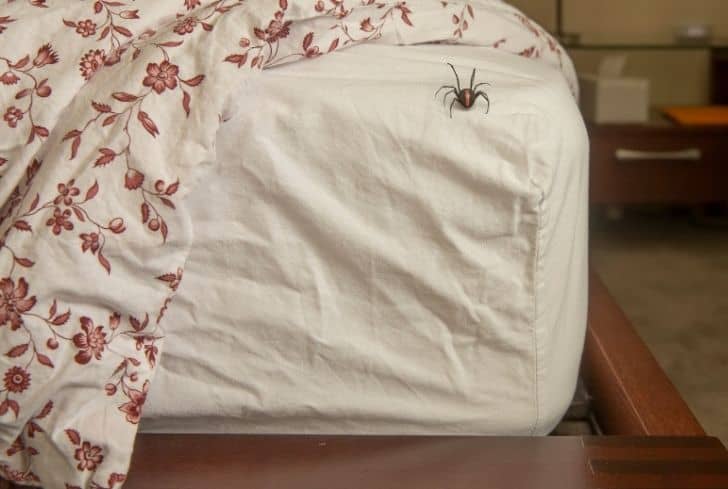

Have you ever glanced over at your canine companion, only to find them performing acrobatics in their sleep? These comical sleeping positions provide dog owners with more than just temporary entertainment. As it turns out, dog sleeping positions can tell you a lot about your pup’s physical and mental state.
From side sleeping to the “superman,” we’re going to go over each of the positions your dog may sleep in. We’ll also go into more detail about what each position means in terms of your furry friend’s health. Read on to become more in tune with how your dog is actually doing.
There are a variety of different positions you may find your dog snoozing in. Each unique position also comes with its own signs of how your animal is feeling. Do they feel calm and secure? Maybe they’re sleepy but are also ready to play at a moment’s notice.
Regardless of their intentions, let’s go into further detail about each sleeping position.

Because their paws are free to move around, you’ll also find that this is the most common position to see twitching and running movements while they’re asleep. Generally, side sleeping is most prominent with puppies and older dogs with stiff joints.

When your pup is laying in the superman pose, it usually means they’re tired but ready to play at a moment’s notice. The superman sleeping position is the epitome of “play until you drop.” With high-energy dogs, they may run around until they get so tired they literally drop wherever they stop.
Laying in the superman pose allows them to get some rest without restricting them from getting up as fast as they can when they’re ready again.
The lion’s pose is used when your dog is sleeping with its head resting on top of its paws. The paws may be outstretched or tucked underneath each other, and their legs can be underneath them or laid out to one side.
When your pooch is resting in a lion pose, it generally means they’re just resting rather than sleeping deeply. According to experts, many dogs use this position to rest while still being ready to jump up at any moment. Dogs who use lion pose are generally very protective and playful.

Unsurprisingly, the donut is an extremely common sleeping condition with dogs when they first come into a home, previously experienced abuse, or come from areas with colder climates.
If you notice your dog sleeping in the donut position and they typically don’t, it’s possible your home temperature is too low.
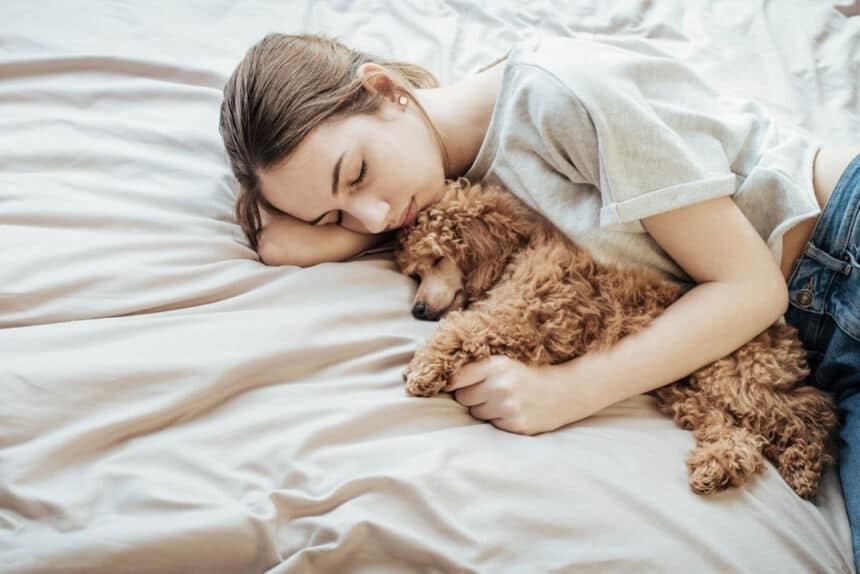
The position is a sign of love, a want to bond, and a need to feel closer to you or the other inhabitants in your home. For dog owners that don’t mind letting their canine on the furniture, this is the best sleeping position for your furry friend.

This position is closely related to the lion’s pose, and superman as one or the other may be utilized.

Because dogs sweat through their paws, holding them in the air allows them to air out while they lose excess body heat. However, as dogs age, they experience arthritis, and it’s less likely for them to utilize this sleeping position.
Dogs who sleep belly up are typically very trusting and loving personalities. They don’t mind sleeping anywhere and are completely comfortable with their surroundings.
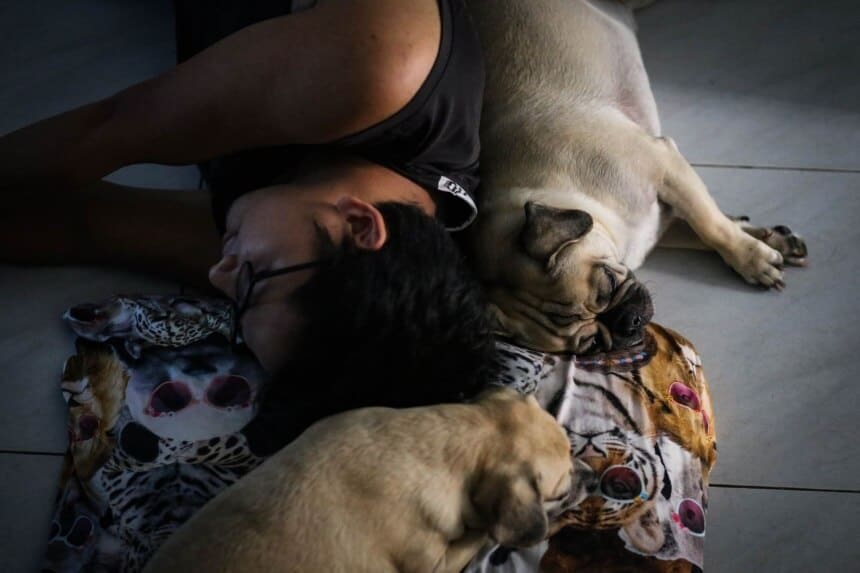
The back-to-back is very similar to the cuddler bug sleeping position. However, sleeping back-to-back involves back touching rather than the tummy.
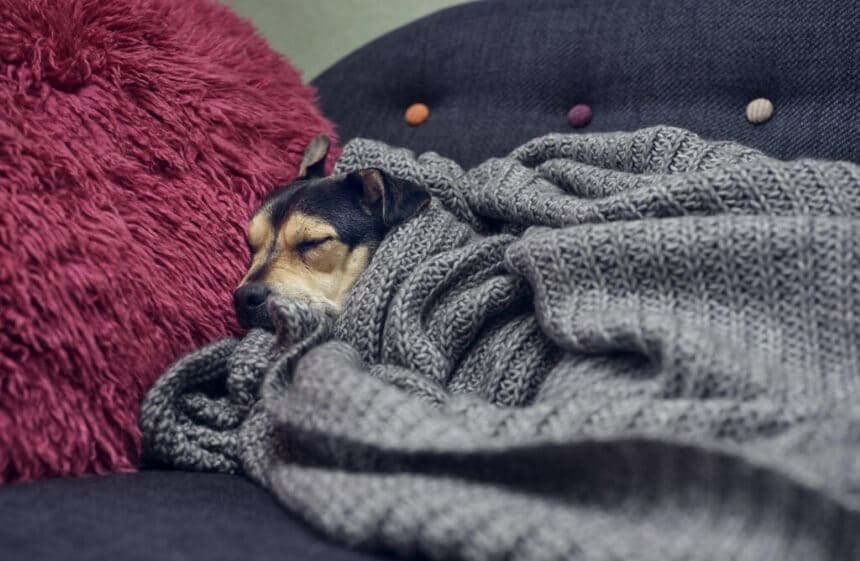
To fall asleep, it’s common for burrowers to need a lot of affection and attention from their owners.
Along with your dog’s preferred sleeping position, their behaviors during rest times are also telling of how they’re feeling.
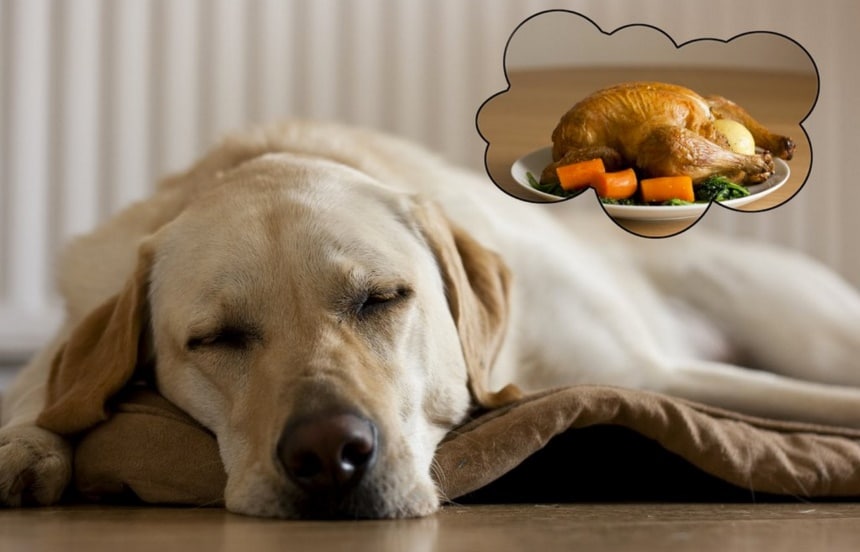
If you notice your dog barking or squeaking while they’re asleep, it’s likely just a reaction from the dream they’re having. Much like how many people talk in their sleep, it’s common for dogs to do so too.
Twitching is a common and completely natural body function, and it’s most common during REM sleep Trusted Source How much twitching is normal during sleep? - The Magazine of the Austrian Science Fund FWF With the support of the FWF, a group of researchers from Innsbruck examined 100 test subjects in a sleep laboratory and achieved widespread recognition for their collection of standard values for healthy sleep. While even healthy individuals move about more than expected while sleeping, muscle twitching during dreams can be a harbinger of neurodegenerative diseases. scilog.fwf.ac.at . If your dog is twitching in its sleep, it’s most likely their brain and body-switching between sleep stages.
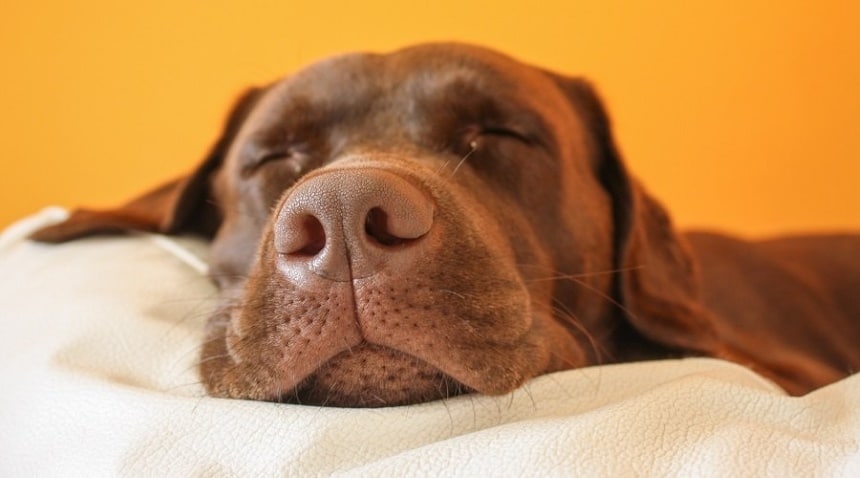
When you notice your dog “running” in their sleep, it’s likely a physical reaction to the dream they’re experiencing. Maybe they’re chasing after a squirrel, or they might be running to catch a frisbee before it hits the ground. Either way, it’s nothing to be concerned about.
If you notice your dog circling around and digging at the floor right before they lay down to sleep, it’s likely an ancestral habit. Before dogs were domesticated, they would use this technique to prepare their bed outdoors. How long do dogs sleep?

The most important thing for you to do to encourage better sleep is to make sure their sleep environment is comfortable. Buy them a comfy dog bed, or prepare yours with a mattress protector and comfortable sheets for you both to sleep on.
Many dog owners like the Nestl Luxury Queen Sheet Set because it’s breathable and effortless to clean. The linen is also made to withstand rough feet, so paws won’t be an issue. However, other dog parents prefer the Shilucheng King Size Bed Sheet Set because they wick moisture away really well. That certainly comes in handy for late-night accidents when your dog can’t get outside.
Curious why some dogs sleep on their backs? Wondering if puppies sleep a lot? Check out the FAQ below.
When a dog sleeps on its back, that indicates its trust in those around them. Their underbelly housing their internal organs is exposed, so they aren’t wary of any possible danger. Dogs also sleep on their backs to cool themselves off. Because they sweat through their paws, having their paws in the air makes it easy to lose excess heat.
Despite being full of energy when they’re awake, puppies typically sleep anywhere from 18-20 hours per day. Young puppies thrive off of short spurts of energy, which is why you may find them running wild and then plopping down in an instant.
Dogs make the most amusing and playful pets, whether they’re asleep or awake. It’s entertaining to watchdog sleeping positions sometimes when they contort themselves in seemingly impossible ways. Sometimes these positions can look downright uncomfortable. With that said, it’s important to remember that they wouldn’t fall asleep that way if they weren’t comfortable. We hope this article covering the most common canine sleeping positions and behaviors was helpful for you.


